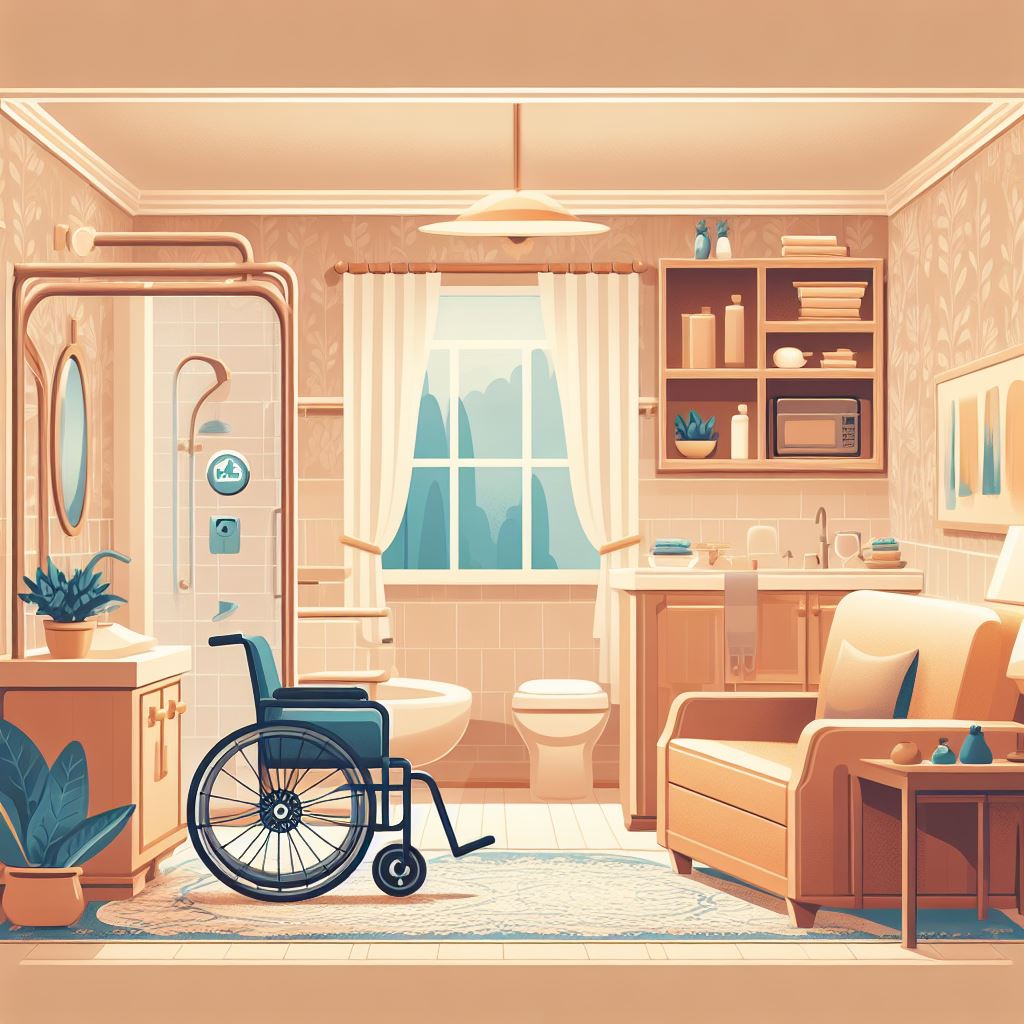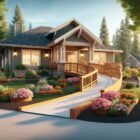Essential Criteria Checklist for Elderly Section 8 Housing

Imagine finding the perfect place for your loved one to call home. A place that meets all their needs, provides safety and security, and offers a vibrant community.
That’s why we’ve created this essential criteria checklist for elderly Section 8 housing. With our detailed knowledge and empathetic approach, we’ll guide you through the process of choosing the right location, ensuring accessibility, and providing the amenities and services that matter most.
Let us help you find the perfect home for your loved one.
Key Takeaways
- Proximity to essential amenities such as grocery stores, pharmacies, and medical facilities is important for elderly residents in Section 8 housing.
- Accessibility features like ramps, elevators, and wide hallways should be considered to accommodate wheelchairs and walkers.
- Safety and security measures, such as well-maintained entry systems and surveillance cameras, are crucial for the well-being of elderly residents.
- Availability of community spaces for socializing, support services tailored to the needs of the elderly, and access to transportation services and healthcare resources are important factors for elderly residents in Section 8 housing.
Location
Are you wondering where the ideal location for elderly Section 8 housing might be? When it comes to choosing the right location, there are several factors to consider.
Firstly, proximity to essential amenities such as grocery stores, pharmacies, and medical facilities is crucial. Older adults may have limited mobility, so having these resources nearby ensures easy access to their everyday needs.
Additionally, a safe and secure neighborhood is of utmost importance. Seniors should feel comfortable and protected in their surroundings. Look for areas with low crime rates and well-lit streets.
Furthermore, public transportation options should be readily available. Many elderly individuals rely on public transportation for their mobility needs, so having bus stops or train stations close by is essential.
Lastly, consider the social aspect. Is there a community center or senior center nearby? These facilities provide opportunities for social interaction, which is vital for the mental and emotional well-being of seniors.
Accessibility
When considering elderly Section 8 housing, it’s important to evaluate the accessibility of the location. Accessibility plays a crucial role in ensuring the comfort and safety of elderly individuals. To determine the accessibility of a housing location, there are several key factors to consider.
First and foremost, it’s essential to assess the entrance and common areas of the building. Are there ramps or elevators available for individuals with mobility issues? Are the hallways wide enough to accommodate wheelchairs or walkers? These considerations are vital to guarantee that elderly residents can move around the building independently and with ease.
Additionally, the availability of accessible parking spaces should be examined. Elderly residents often rely on vehicles for transportation, and having designated parking spots close to the building entrance can greatly enhance their convenience and mobility.
Furthermore, evaluating the accessibility of nearby amenities and services is crucial. Are there grocery stores, pharmacies, and medical facilities in close proximity? Access to these essential services can greatly impact the quality of life for elderly individuals, ensuring that their daily needs are met conveniently and without difficulty.
Safety and Security
Ensuring the safety and security of elderly residents is crucial when evaluating Section 8 housing options. As you search for suitable housing, it’s essential to consider various factors that contribute to a safe living environment.
One of the primary concerns is the presence of security measures such as well-maintained entry systems, surveillance cameras, and secure locks on doors and windows. These features can help deter unwanted intruders and protect residents from potential harm.
In addition to physical security measures, it’s important to inquire about the safety protocols and emergency response systems in place. Ask about the availability of on-site staff or security personnel who can respond promptly to any emergencies. Also, consider the proximity of the housing complex to essential services like hospitals and police stations. A quick response from emergency services can make a significant difference in critical situations.
Another aspect to evaluate is the overall neighborhood safety. Research the crime rates in the area and inquire about any recent incidents. A secure neighborhood provides peace of mind and allows elderly residents to feel safe when going about their daily activities.
Lastly, check if the housing complex has features specifically designed for the elderly, such as grab bars in bathrooms, slip-resistant flooring, and well-lit common areas. These modifications can greatly reduce the risk of accidents and falls, which are common concerns for older individuals.
Amenities and Services
You should regularly assess the amenities and services available in Section 8 housing for the elderly. It’s important to ensure that the housing provides a comfortable and convenient living environment for the elderly residents.
Here are three key aspects to consider when evaluating the amenities and services:
- Accessibility: The housing should have features that make it accessible for elderly individuals with mobility issues. This includes ramps or elevators for easy access to different floors, wide doorways to accommodate wheelchairs or walkers, and grab bars in the bathrooms for added safety.
- Community Spaces: Look for common areas where residents can socialize and engage in activities. These spaces can include a community room, a library or reading area, a fitness center, or outdoor seating areas. These amenities encourage social interaction and help foster a sense of belonging among the residents.
- Support Services: It’s crucial for Section 8 housing to provide support services tailored to the needs of the elderly. This can include on-site staff or caregivers who can assist with daily activities, transportation services to help residents get to medical appointments or run errands, and access to healthcare resources.
Community and Social Activities
Evaluate the availability of community and social activities in Section 8 housing for the elderly to foster a sense of connection and engagement among residents. When considering elderly Section 8 housing, it’s crucial to assess the range of community and social activities offered to residents. These activities play a vital role in promoting social interaction, preventing isolation, and enhancing the overall well-being of elderly individuals.
Look for housing communities that provide a diverse range of activities tailored to the unique interests and needs of their residents. A comprehensive community activities program should include options such as exercise classes, arts and crafts workshops, book clubs, movie nights, and regular social events. These activities offer opportunities for residents to connect with others, share common interests, and develop meaningful relationships within the community.
Additionally, evaluate the accessibility and convenience of these activities. Are they offered on-site, reducing the need for residents to travel? Are transportation services available for those who may have difficulty getting around? The availability of convenient and accessible community and social activities is essential in ensuring that all residents can participate and engage, regardless of their physical abilities.
Frequently Asked Questions
What Is the Maximum Income Allowed for Eligibility in the Section 8 Housing Program for Elderly Individuals?
The maximum income allowed for eligibility in the Section 8 housing program for elderly individuals is determined by the Department of Housing and Urban Development (HUD). They set the income limits based on the area and size of your household.
Are Pets Allowed in the Elderly Section 8 Housing?
Yes, pets are allowed in the elderly section 8 housing. It’s important to note that there may be certain restrictions and guidelines in place to ensure the safety and well-being of both residents and their furry friends.
Are There Any Restrictions on the Number of Bedrooms in the Elderly Section 8 Housing Units?
Yes, there are restrictions on the number of bedrooms in the elderly Section 8 housing units. It is important to consider these restrictions when searching for a suitable living arrangement.
Can Family Members or Caregivers Stay With Elderly Residents in the Section 8 Housing?
Yes, family members and caregivers can stay with elderly residents in Section 8 housing. This allows for support and companionship, ensuring the well-being and safety of the elderly individuals in their homes.
What Is the Process for Applying for Elderly Section 8 Housing and How Long Does It Typically Take to Get Approved?
To apply for elderly Section 8 housing, gather the necessary documents and complete the application. It typically takes about 2-4 weeks to get approved, but the timeframe can vary. Stay patient and contact the housing authority for updates.



